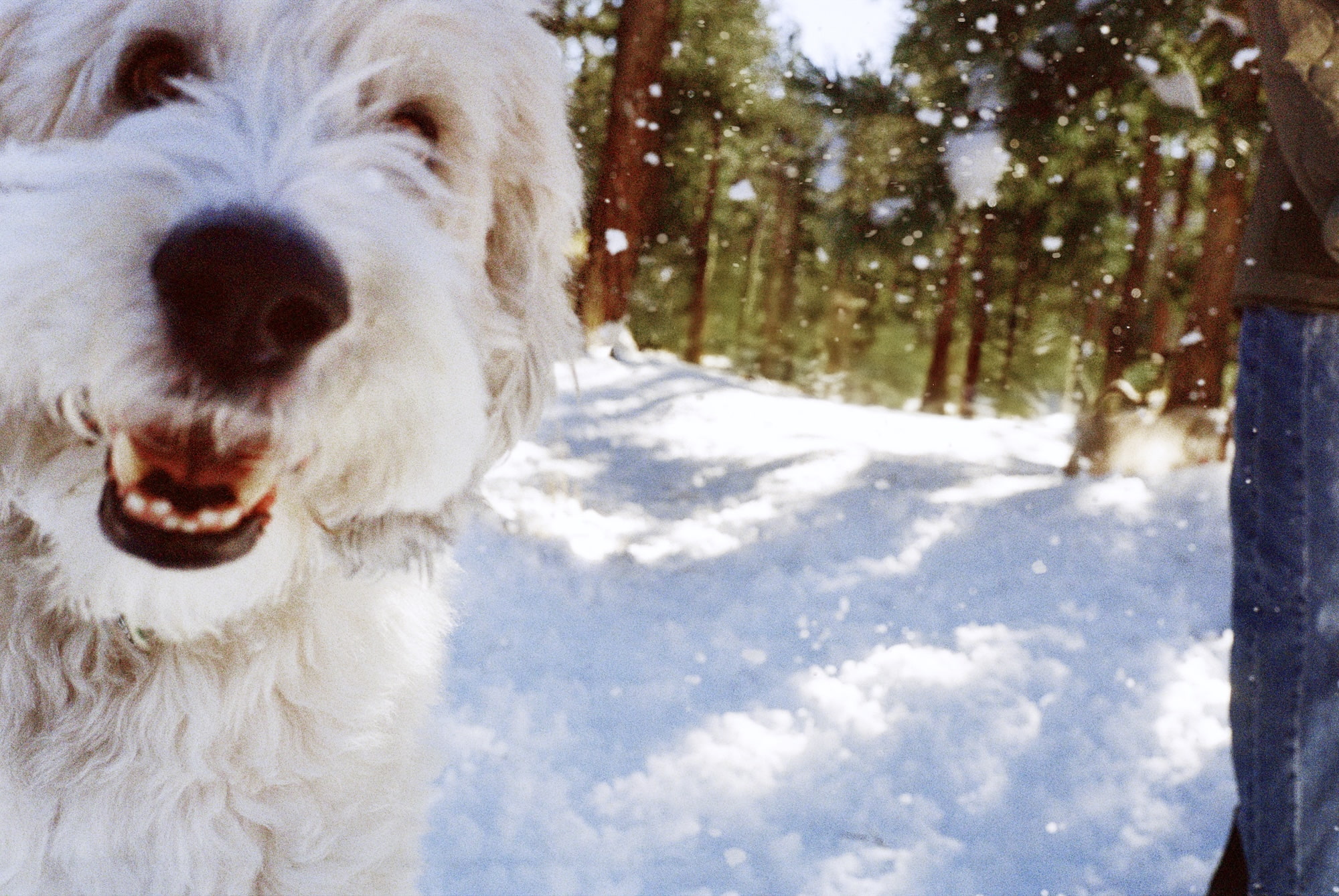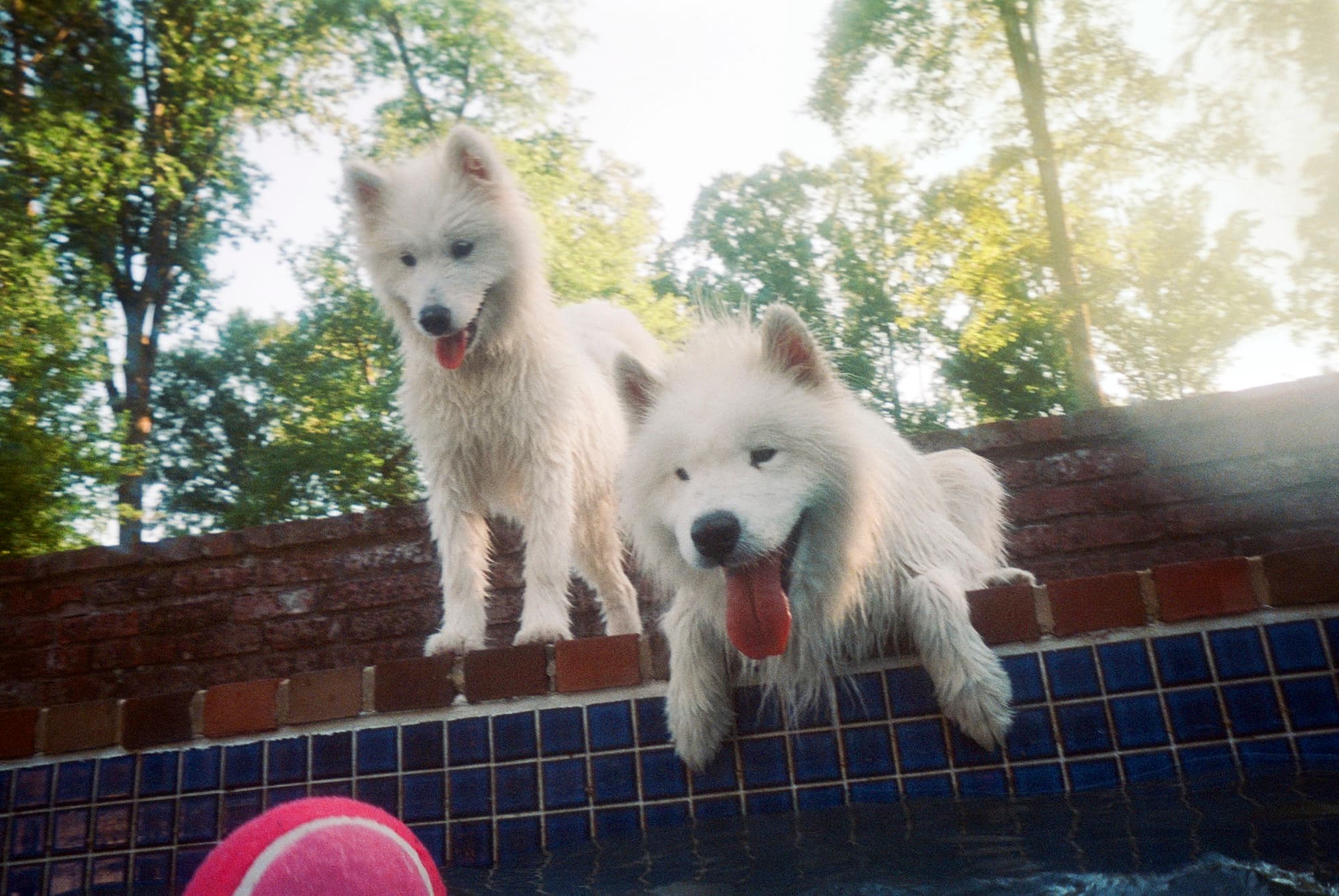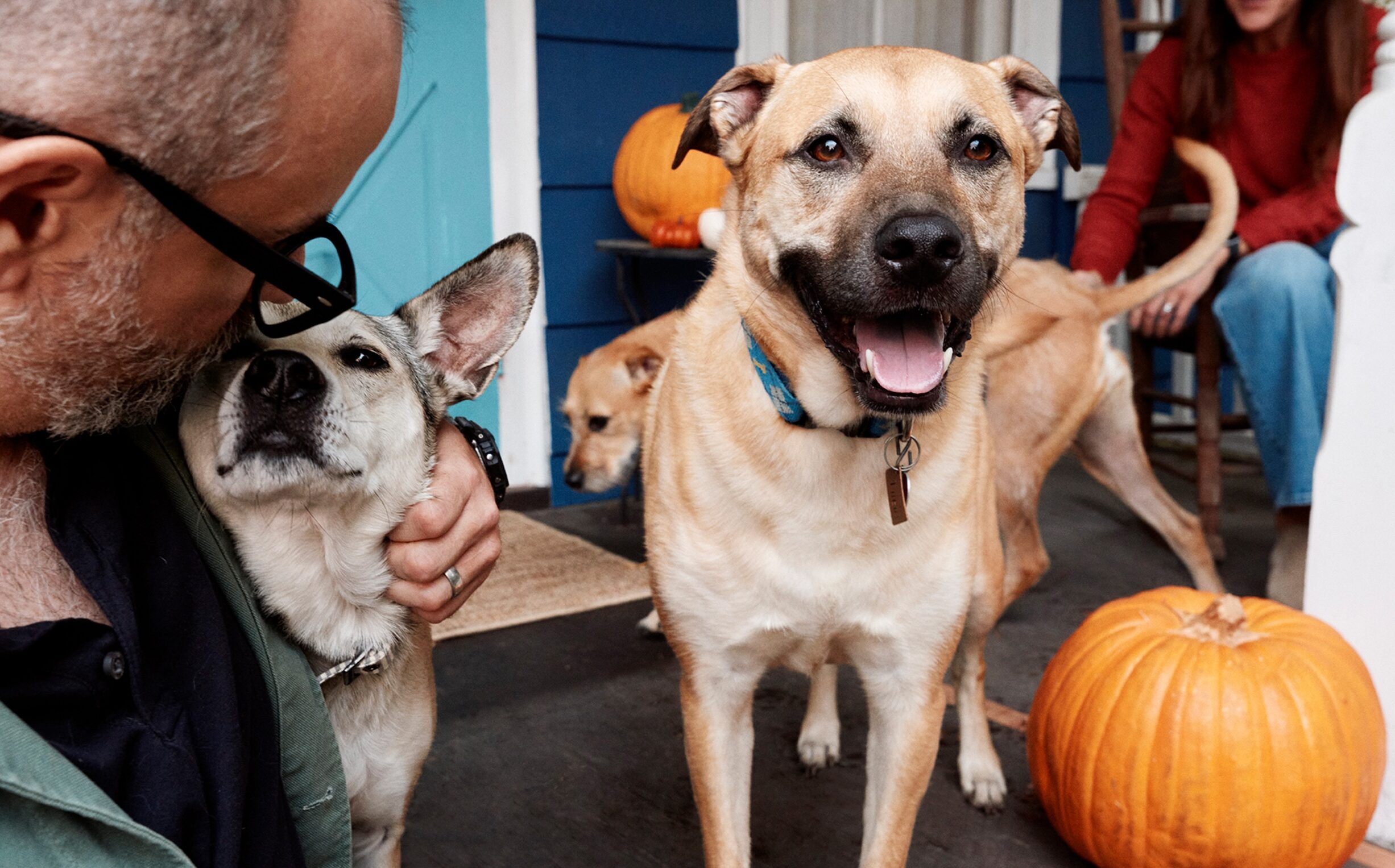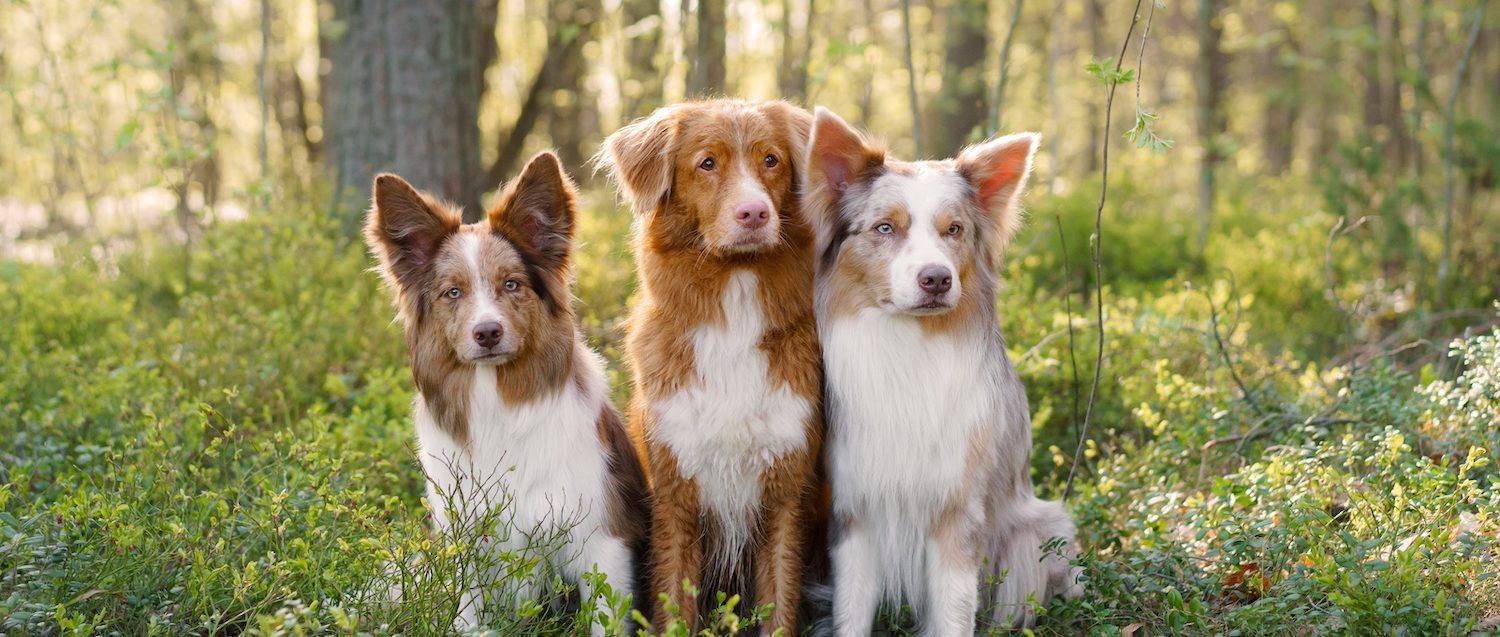
When you walk from one end of the room to another, where do your dog’s eyes go? What about when another dog walks into the park, or a squirrel passes by your window? While every dog is different, there’s a good chance yours is paying close attention to their world and the individuals in it. So it should be no surprise that, even when we’re not actively trying to teach them, dogs are learning.
While positive reinforcement via treats is usually the most practical way to teach your dog a new skill, dogs can also learn by watching humans or other pups. This is called “social learning.”
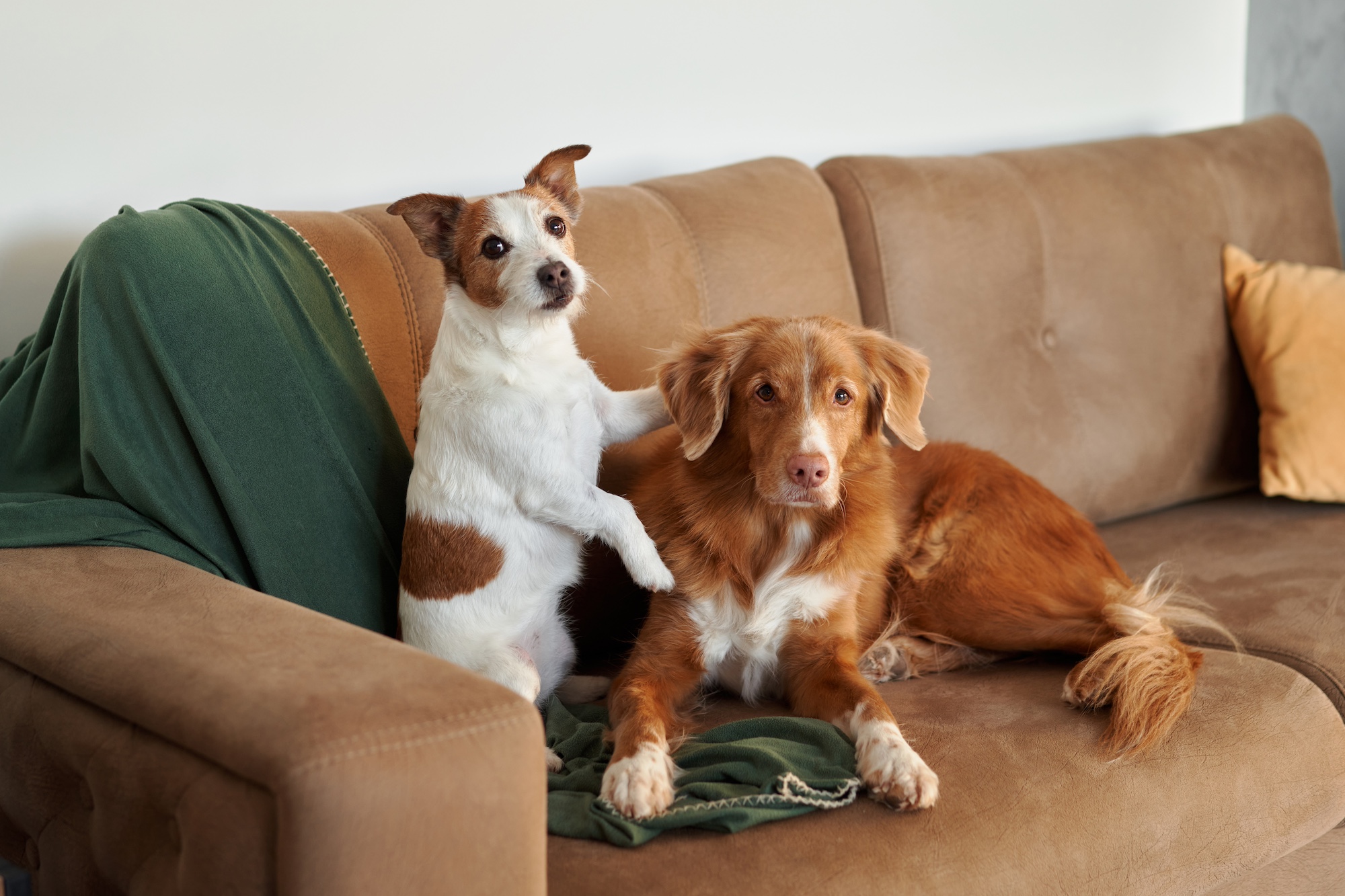
Dogs are social animals
Dr. Stanley Coren, Professor Emeritus at the University of British Columbia, says, “Dogs evolved from social hunters like wolves. And you’ve got to ask yourself: How do those young wolves learn how to hunt? They don’t have a human being over there… they do it by patterning their behaviors after the adults’. And [scientists have] shown experimentally that the same things occur in dogs.”
A 2018 study from Eötvös Loránd University in Hungary found that 8-week-old puppies could learn how to open a puzzle box containing food by watching other dogs do so. The puppies were more likely to learn this skill from unfamiliar dogs than from their own mother, a difference that the researchers thought was probably due to the puppies paying closer attention to the stranger.
Dr. Marc Bekoff, an ethologist and professor emeritus of Ecology and Evolutionary Biology at the University of Colorado, Boulder, who was not involved in the study, says that the attention puppies paid to a dog they didn’t know is a reminder of the importance of socialization. “I’ve always felt,” he says, “that the greater number of individuals [puppies] interact with, the better it will be. They learn differences among humans, and they may learn consistencies among humans. I like the idea that it’s a very simple mechanism—that they’re just paying attention more to someone they don’t know.”
Dr. Coren says that sometimes dogs will mimic behaviors from family members that don’t seem to be “particularly meaningful.” He says he’s heard from multiple parents of babies who also have malamutes in the home who have seemingly imitated the babies’ babbling. “Babies tend to repeat a single syllable with a vowel in it,” Dr. Coren says, “like ‘ah ah ah ah ah.’ In three instances, I think, people have told me that their malamute has come over and mimicked that behavior—the malamute would go “ah ah ah ah ah,” with his eyes on the baby at the same time.”
People already knew that dogs could learn from each other
Even before studies like the one mentioned above, people understood that dogs could learn from one another. Dr. Coren gives the example of the mountain rescue dogs of the Hospice of St. Bernard. Evidence of these dogs’ existence goes back to at least the 1700s, and for many years they saved travelers trapped in the snow (the dogs no longer perform this task; these days, human rescuers arrive by helicopter). Dr. Coren describes their training this way: “Those dogs work in sets of three. If they find somebody stranded over there in the Alps, two of the dogs will snuggle up next to the person, licking their face and trying to provide body heat and facial stimulation—and the third dog will run off to get help. The way that they train the dogs is, they’ll take a working set of three, and they’ll add an extra dog or two—and those dogs will not only learn the task by just watching the working team, but they’ll also make a ‘career choice’ as to whether they’re going to be a stayer or a goer.”
Dr. Coren has also observed the benefits of dogs’ social-learning abilities in lower-stakes situations. He pointed to dogs’ tendency to help each other learn to navigate the stairs in his house. Normally, training a puppy to use stairs is a drawn-out process in which a dog must be gradually rewarded for each individual step, and it may take a long time for them to get comfortable. But Dr. Coren says it goes much more quickly, in his experience, when the new dog has a role model. “When you have an adult dog in the house,” he says, “the adult dog will march up the steps. If the puppy doesn’t follow the first time, the older dog tends to come down and make nuzzling motions or bark, and then start up the steps again—and the pup starts to march up the steps slowly. But with the encouragement of the other dog, you can do it in a single trial—which you could never do without the adult dog.”
Dr. Bekoff remembers witnessing something like this in his own home. When he brought home a malamute named Mishka, who had never dealt with stairs before, he saw another one of his dogs, Inuk, running up and down the steps until Mishka followed. “I don’t know that he was trying to teach her something” Dr. Bekoff says, “But on about the tenth time, she gingerly went down the steps.”
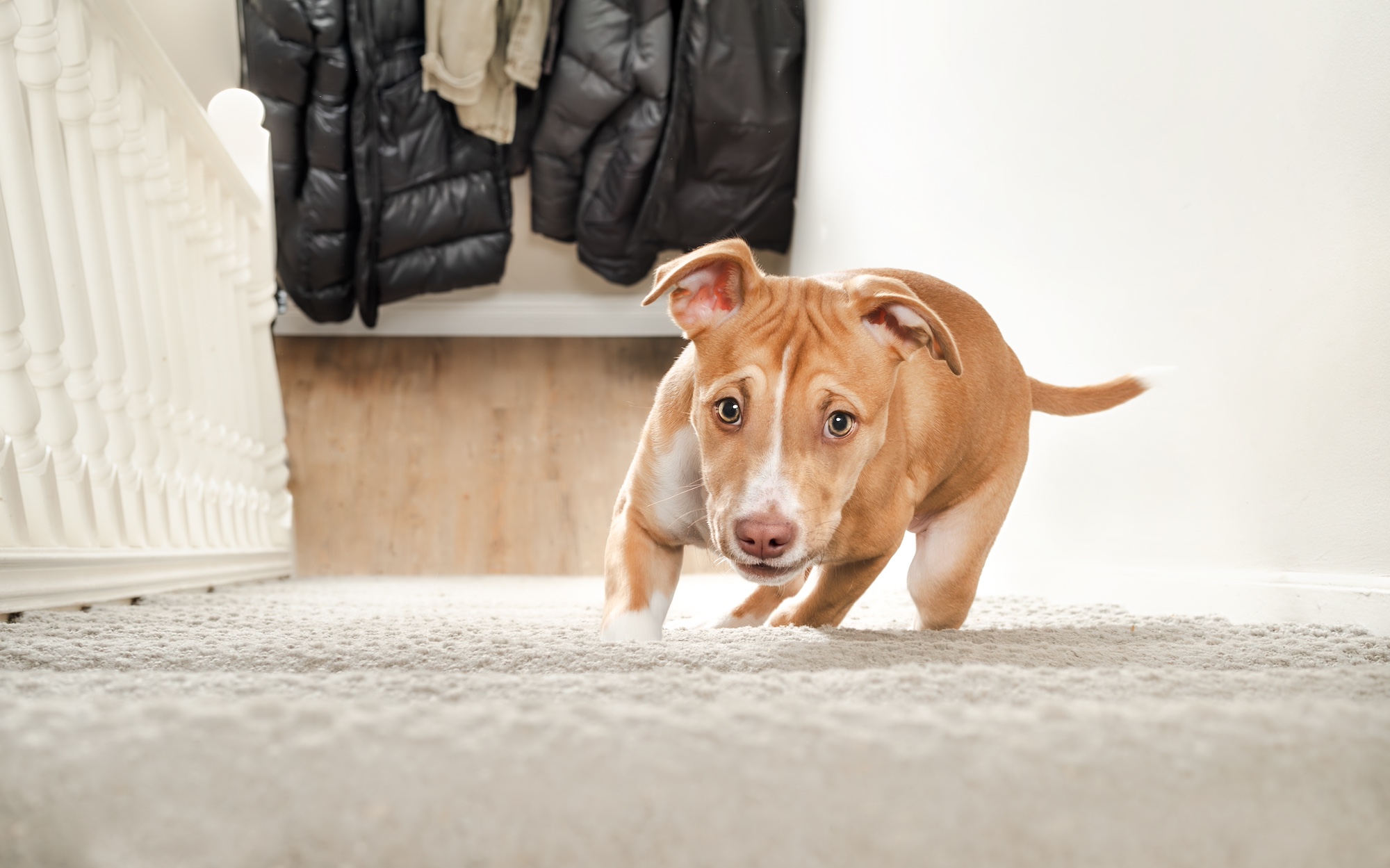
Dogs can remember what you do, and repeat it
Researchers at Eötvös Loránd University have also found that dogs are able to learn to repeat a task they’ve just watched a person perform, when prompted with the command “do it!” This shows that they can generalize the idea of repeating what they’ve just seen—and, obviously, that they can watch and remember what someone else has done.
Dr. Coren says that dogs receiving “do as I do” training can learn that they’re trying to achieve a specific objective, and not necessarily only one particular way to do it. He gives the example of flipping a light switch. A dog taught to do this by watching a person “might use his paw, but he might use his muzzle just as well to turn it on and off. You can think of it as more or less functional imitation as opposed to exact imitation,” Dr. Coren says.
Dogs can watch and learn things you’d rather they not learn
All dogs are good—but a dog with undesirable habits can, in some ways, be a “bad influence.” As such, you’ll want to be mindful of what your dog sees and pay extra attention to their training when they’re around a dog whose behavior you don’t want them to emulate.
One situation where this comes into play, according to Maddie Messina, applied animal behaviorist and founder of Paws for Thought Dog Training in New York City, is when you bring a second dog into a home where the first dog already has some habits you don’t like. “I caution a lot of clients against bringing a second dog into their home when the first dog has behavioral issues,” she says, “because what’s worse than one dog with separation anxiety? Two dogs with separation anxiety.” In addition to separation anxiety, Messina says she’s seen dogs pick up leash reactivity from one another—one dog who previously had not been reactive might start barking at approaching dogs if their walking partner does so.
If your dog is going to spend time around another dog whose influence you think might present an issue, Messina suggests leaning on their skills and rewarding them for the behavior you like. If the dog your pup will be around jumps on humans while greeting, for example, and you don’t want yours to do that, actively ask them to sit, lay down, shake, or do other things you like. Make it more fun and interesting than imitating their new acquaintance. By doing this, she says, “you are proactively inhibiting [your dog] from [imitating the undesirable] behavior in the first place—because the more they perform a behavior, the more it gets solidified in their behavioral repertoire.”
Dogs can learn through competition
A style of training called “model/rival” training takes dogs’ natural inclination to watch and learn into account. In this type of training, one trainer gives instructions, and another models the proper behavior and serves as a rival to the dog who’s learning the new skill. The dog in this video appears to learn how to knock over a water bottle after watching a human competitor do so several times.
At least one study found a model-rival method as effective as operant conditioning in teaching dogs the names of objects. So, while we don’t suggest abandoning your more conventional training methods, incorporating fun games like the above could be a rewarding way to give your dog some extra mental stimulation.
Social learning makes sense for social animals
Dr. Bekoff says that an ability to watch and learn from those around them is an important skill for dogs. “Dogs are really good ethologists,” he says, using a word for those who, like him, study animal behavior. “A lot of animals are—because they’ve got to pick up information fast. They don’t want to jump into a social encounter where they might get injured. And they don’t want to interact with a human who may not like them. To me, as an evolutionary biologist, it just makes sense.”
